Ed Bamiling
Ed Bamiling has worked with paper clay since, as a young artist, he participated in the development of the paper clay process at the Banff Centre. As he worked with the medium it shaped his consideration of ceramic process and aesthetics, which moved him to explore beyond the normal boundaries and incorporate concepts of the found object intermingled with a play with traditional form.

The Lightness Of Being (#22.12.2), paperclay, oxides, glazes, 10 x 7 x 3 inches (25 x 18 x 7.5 cm), $475 Cdn.

Dark Canyon Cup & Saucer (14.2), paper clay, raku, 4 x 11.5 x 8 inches (10 x 29 x 20.5 cm), $825 Cdn.

Vortex Cup With Overhang (14.1), paper clay, oxides, glazes, 4 x 10.5 x 5.5 inches (10 x 27 x 14 cm), $750 Cdn.

Fragmented Cup With Red Sphere (14.3), paper clay, oxides, glazes, 9 x 7 x 5 inches (23 x 17 x 2.5 cm), $750 Cdn.

Turquoise Nesting Bowl, 3 pieces (19.20), paperclay, oxides, glazes, 2.5 x 5.5 x 5.5 inches (6.5 x 14 x 14 cm), $175 Cdn.

Genesis Dish (19.11), paper clay, oxides, glazes, 1.5 x 8 x 8 inches (4 x 20 x 20 cm), $300 Cdn.

Earthly Dish (19.3), paper clay, oxides, glazes, 2 x 10 x 10 inches (5 x 27 x 27 cm), $400 Cdn.
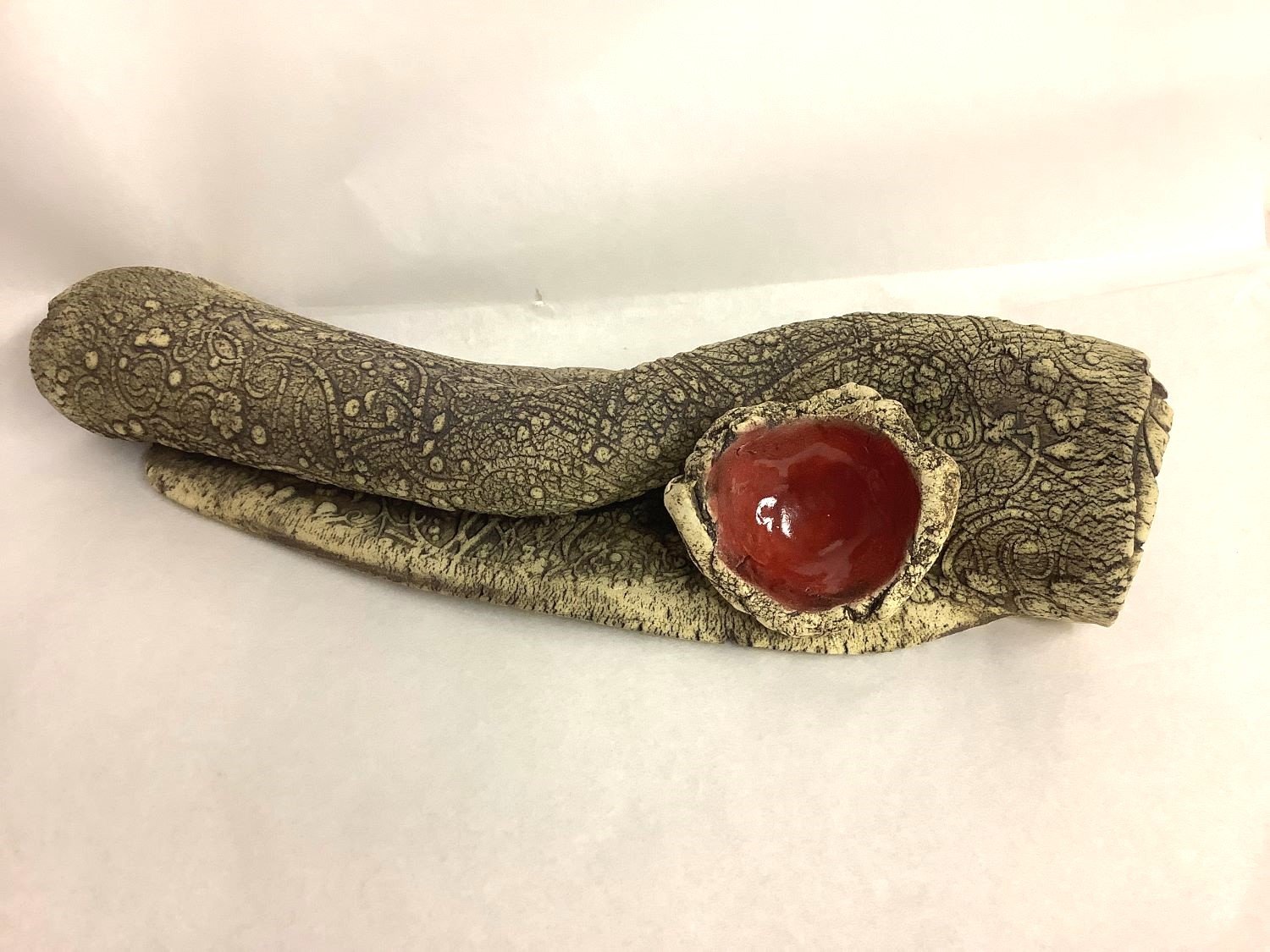
Stone Carpet (#40), 2023, paper clay, oxides, glazes, 12.5 x 3 x 5 inches (30 x 7.5 x 13 cm), $450 Cdn.

Oblong Cup With Double Saucer (14.6), paper clay, oxides, glazes, 3 x 14 x 5.5 inches (8 x 35 x 14 cm), $800 Cdn.

Small Whimsy Cup (23.11), paper clay, glazes, oxides, 1.5 x 3 x 3 inches (3 x 7.5 x 7.5 cm), $35 Cdn.

The Deep Space Dish (19.16), paper clay, oxides, glazes, 10 x 2 x 10 inches (25 x 5 x 25 cm), $350 Cdn.

Red & Black Cup & Saucer (13.1), 2 pieces (13.2), paper clay, oxides, glazes, 4.5 x 15.75 x 6.75 inches (11.5 x 40 x 15.75 cm), $750 Cdn.

Mottled Blue Cup & Saucer, 2 pieces (13.2), paper clay, oxides, glazes, 4.5 x 15.5 x 6 inches (11 x 39 x 15 cm), $750 Cdn.
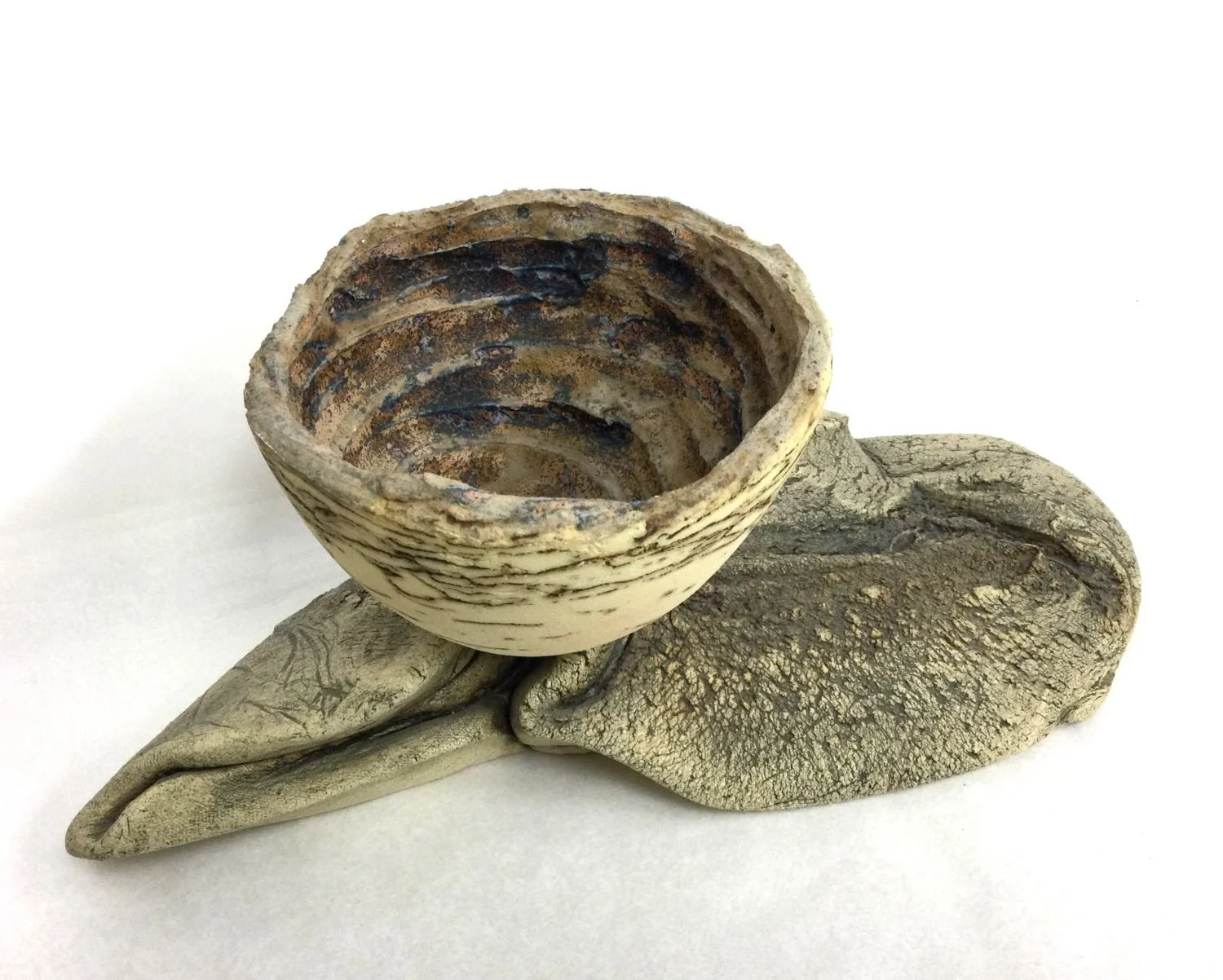
Mica Cup & Saucer, 2 pieces (13.3), paper clay, oxides, glazes, 11.75 x 6 x 4.75 inches (30 x 15 x 12.5 cm), $750 Cdn.

Green Cup & Saucer, 2 pieces (13.4), paper clay, oxides, glazes, 17 x 8.75 x 4 inches (43 x 22 x 10 cm), $750 Cdn.

Red Whimsy Cup (23.1), paper clay, oxides, glazes, 5.5 inches (14 cm), $150 Cdn.

Waiting (13 pieces), paperclay, glazes & oxides, overall 5.5 x 12 x 12 inches (14 x 30.5 x 30.5 cm), $775 Cdn.

Short Blue Whimsy Cup (23.3), paper clay, oxides, glazes, 4 inches (11 cm), $150 Cdn.

Grande Whimsy Cups (23.3, 9 & 10), paper clay, oxides, glazes, 5.5 inches (14 cm), $150 Cdn each.

Tall Blue Whimsy Cup (23.6), paper clay, oxides, glazes, 6.5 inches (16 cm), $150 Cdn.

Aqua Blue Whimsy Cup (23.7), paper clay, oxides, glazes, 5 inches (12 cm), $150 Cdn.

Grande Whimsy Cups (23.6, 16.7, 23.7), paper clay, oxides, glazes, 6 inches (15 cm), $150 Cdn each.

Burst Red & Blue (wall piece), oxides, paper clay, glazes, wood, 52 x 12 x 8 inches overall (132 x 30.5 x 20 cm), $1500.00 Cdn.

Short Red Whimsy Cup (23.4), paper clay, oxides, glazes, 5 inches (12.5 cm), $150 Cdn.

Growth (wall piece), oxides, paper clay, glazes, wood, 26 x 11 x 2.5 inches (66 x 28 x 6 cm), $1100.00 Cdn.

Tall Red Whimsy Cup (23.8), paper clay, oxides, glazes, 8.5 inches (21 cm), $150 Cdn.

Fertility (wall piece), oxides, paper clay, glazes, wood, 26 x 9.5 x 2.5 inches (66 x 24 x 6.5 cm), $1050.00 Cdn.
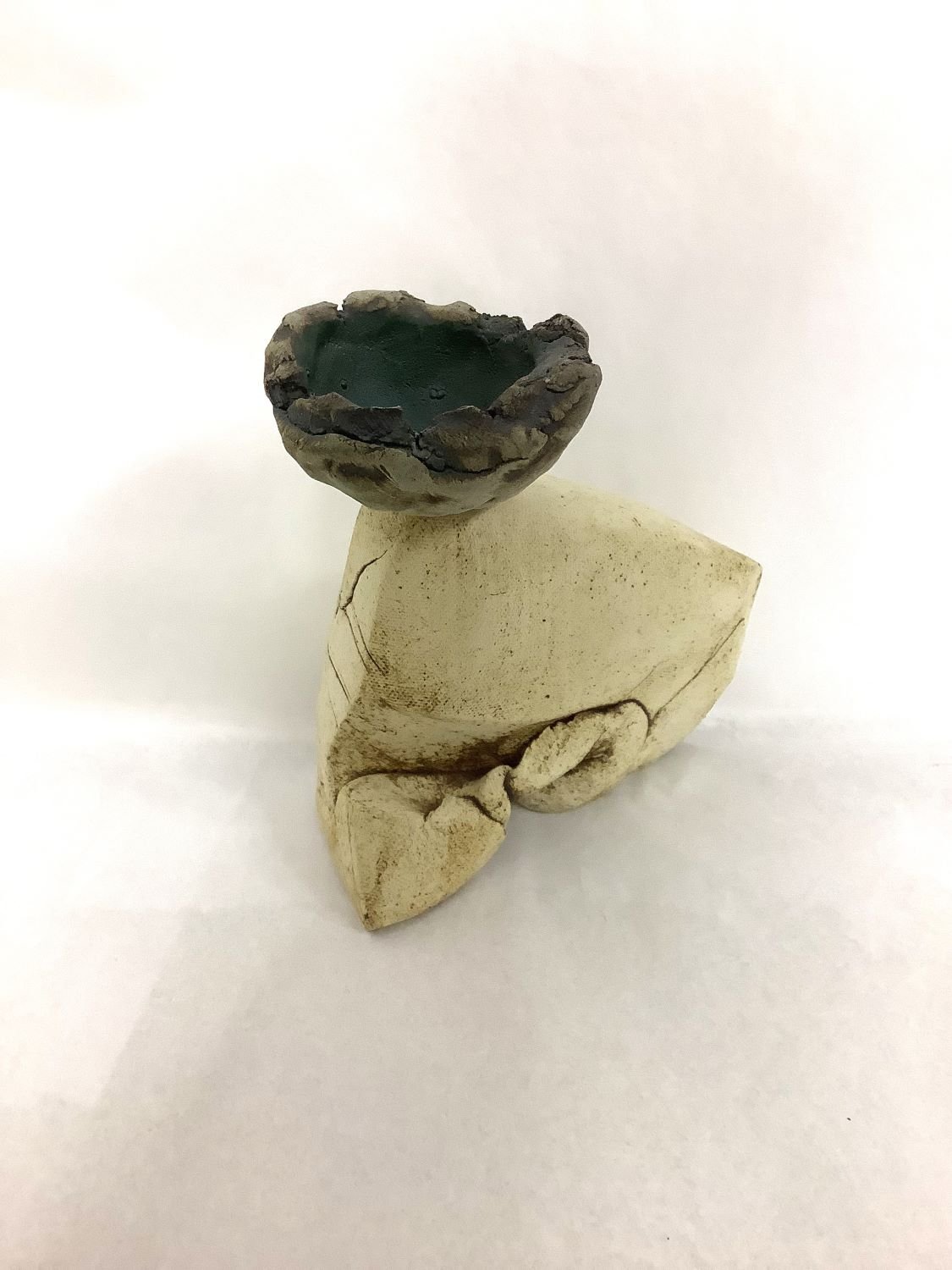
Dark Green Whimsy Cup (19.1), paper clay, oxides, glazes, 5.5 inches (14 cm), $150 Cdn.
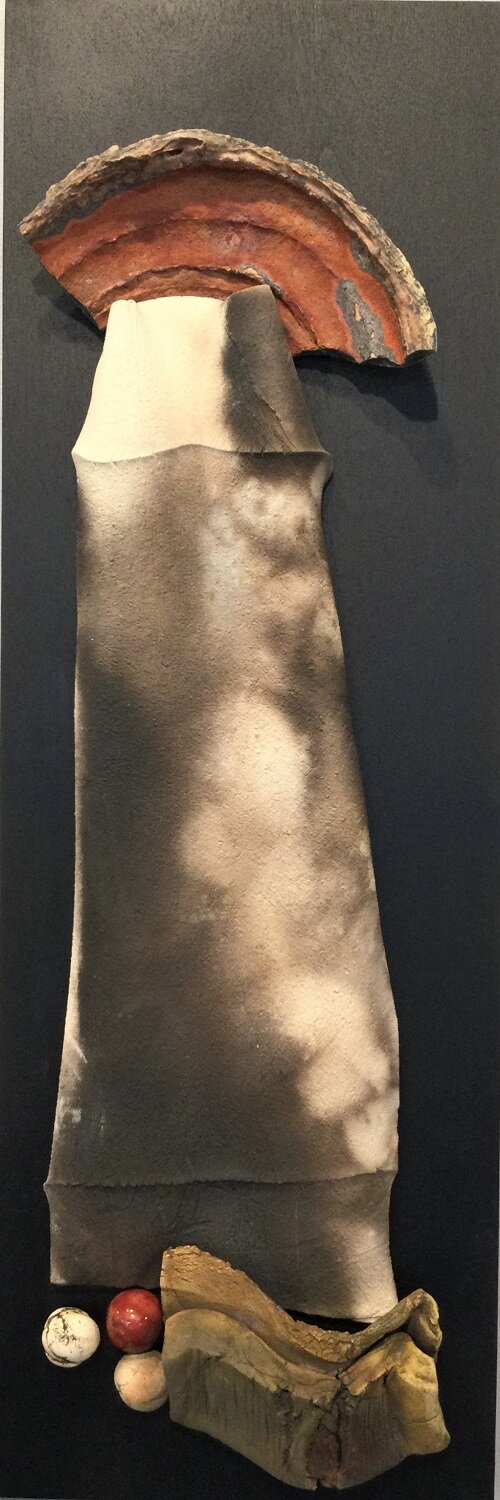
Emergence (wall piece), oxides, paper clay, glazes, wood, 26 x 9 x 4 inches (66 x 23 x 10 cm), $950.00 Cdn.
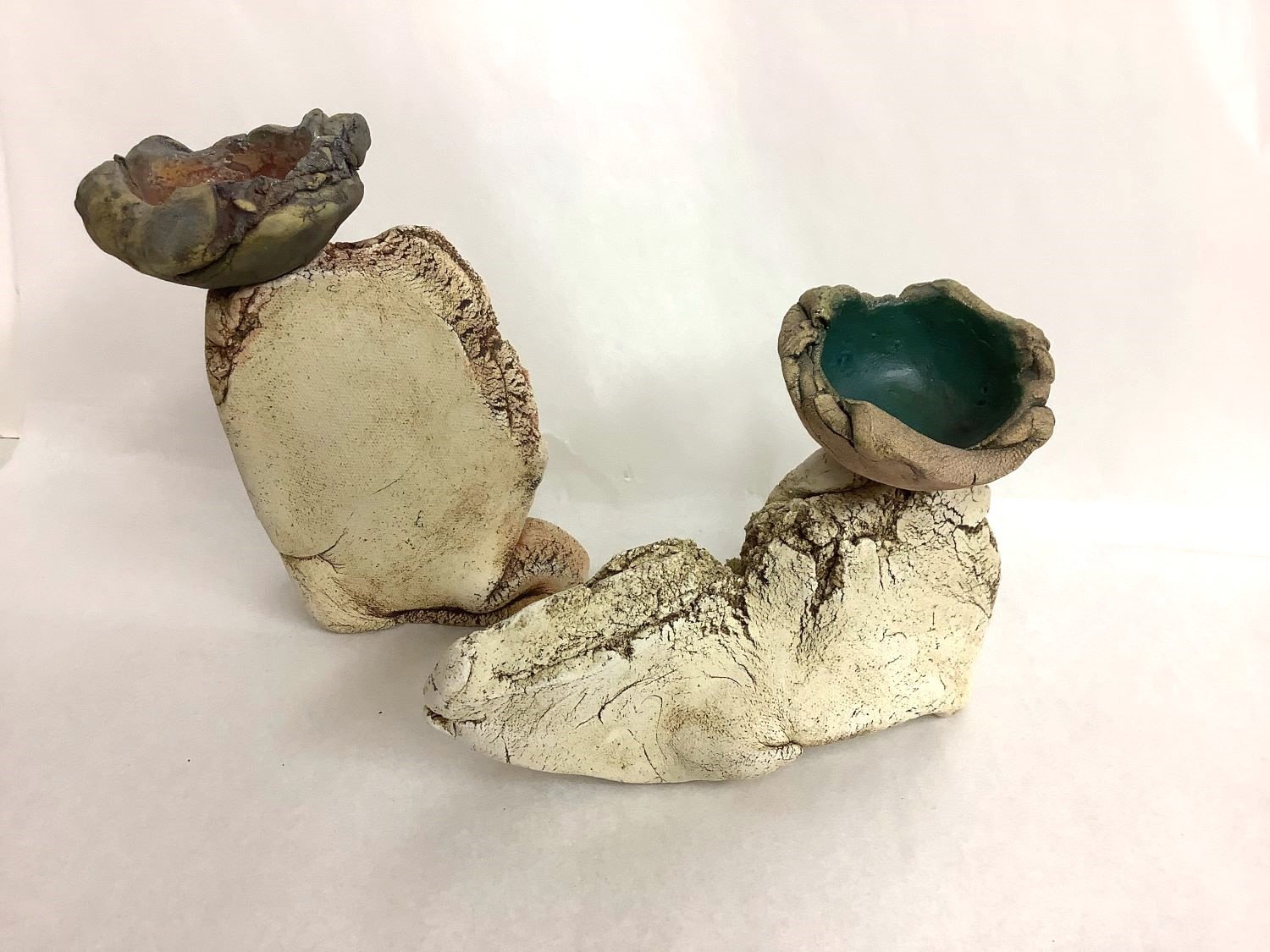
Grande Whimsy Cups (19.27 & 28), paper clay, oxides, glazes, 6 inches (15 cm), $150 Cdn each.

Bird (wall piece), glaze, paper clay, oxides, wood, 27 x 13 x 2.5 inches (68.5 x 33 x 6.5 cm), $850.00 Cdn.

Cube (various sizes), paper clay, oxides, glazes, starting at $85 to $125 Cdn. (contact us about the various others).

Sixteen Tiles (wall piece), oxides, paper clay, glazes, wood, 11.5 x 12 x 3 inches (29.5 x 30.5 x 8 cm), $650.00 Cdn.

Blue Eclipse, paper clay, oxides, glazes, 2 x 8.5 x 21.5 inches, $650 Cdn.
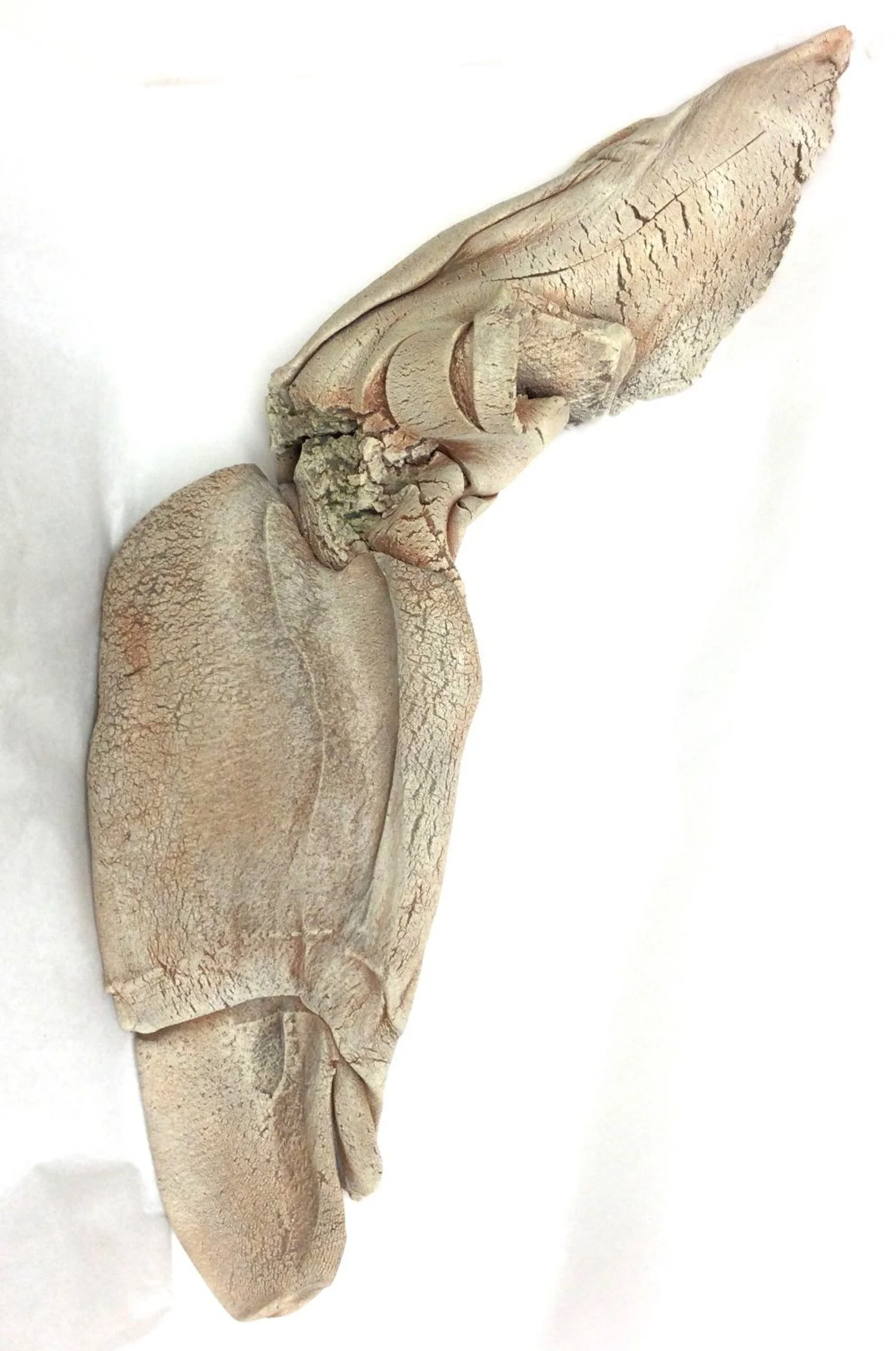
Flight (wall piece), clay and oxides, 21.5 x 8.5 x 4 inches, $800 Cdn.

Contours (#12.11) (two pieces), paper clay, oxides, glazes, 22 x 8 x 4 inches, $750 Cdn.

Clouds, c.2009, saggar-fired clay, 23.25 x 8 x 2 inches (59 x 20 x 5 cm), $550 Cdn.

Green Platter (wall piece), oxides, paper clay, glazes, 19 x 1.5 inches (48 x 3.5 cm), $750.00 Cdn.

Grail Wall Piece (20.6), c.2000, raku-fired clay, metallic oxides, 21 x 16 x 4 inches, $875 Cdn.
“I was mesmerized”
The first time the artist saw someone throw a pot began a life-long fascination with, and dedication to, working with clay. “I was mesmerized by it and wanted to try it. I still have the first pot that I threw on the wheel thirty years ago, because it actually worked out. I think it was beginner’s luck, but I was hooked.” The process, the aesthetic, the tactile medium spoke to him from the very start and in turn, he uses this medium as a way of helping people (re)discover and explore their own creativity, both personally and professionally.
Ed Bamiling’s vessels and sculptures embody a unique connection between the artist’s hand and the hand of the final user. His intentionally personal and multifaceted approach enhances their presence and expressive power. Bamiling pushes the boundaries of clay by incorporating techniques such as grooving, finger-combing strong patterns, hand-modeling, and applying intricate slip and glaze designs. He even uses handmade hair brushes to shape sculptural forms from fragments or to impress natural-inspired textures onto complete vessels, imbuing each piece with a sense of organic harmony.
***
As a young artist Bamiling participated in the development of a hybrid material call “paper clay” at The Banff Centre. Paper clay allows for a greater flexibility in design and manipulation through the incorporation of an abundant amount of cellulose within the clay body. This affords the artist increased latitude in form. Where there is a gain in flexibility to develop typically difficult shapes and details, there is a shift in normal processes of working with clay. Greater percentages of cellulose greatly alter drying and firing processes as well as other technical considerations. This necessarily demands greater attention to such things as shrinkage values during the stages of development from clay to fired object. In other words, paper clay is a technically challenging but aesthetically rewarding medium.
A practicing artist for more than 30 years, at The Banff Centre Ed Bamiling has been a Leadership Development facilitator for over ten years, guiding creativity sessions with both public and custom programs, and is the Ceramics Facilitator with Visual Arts, in charge of all aspects of operating the ceramics studio, as well as consulting with and assisting resident artists on their projects. He has exhibited his work widely in solo and group exhibitions, both nationally and internationally.
***
Paper Clay’s drying process and firings within the kiln can result in spectacularly robust reactions that literally rip and shatter objects. Working with this fundamental characteristic of paper clay, instead of trying to control it, the artist mines the results of previous practice to reorganize the shards and other elements into evocative arrangements.
